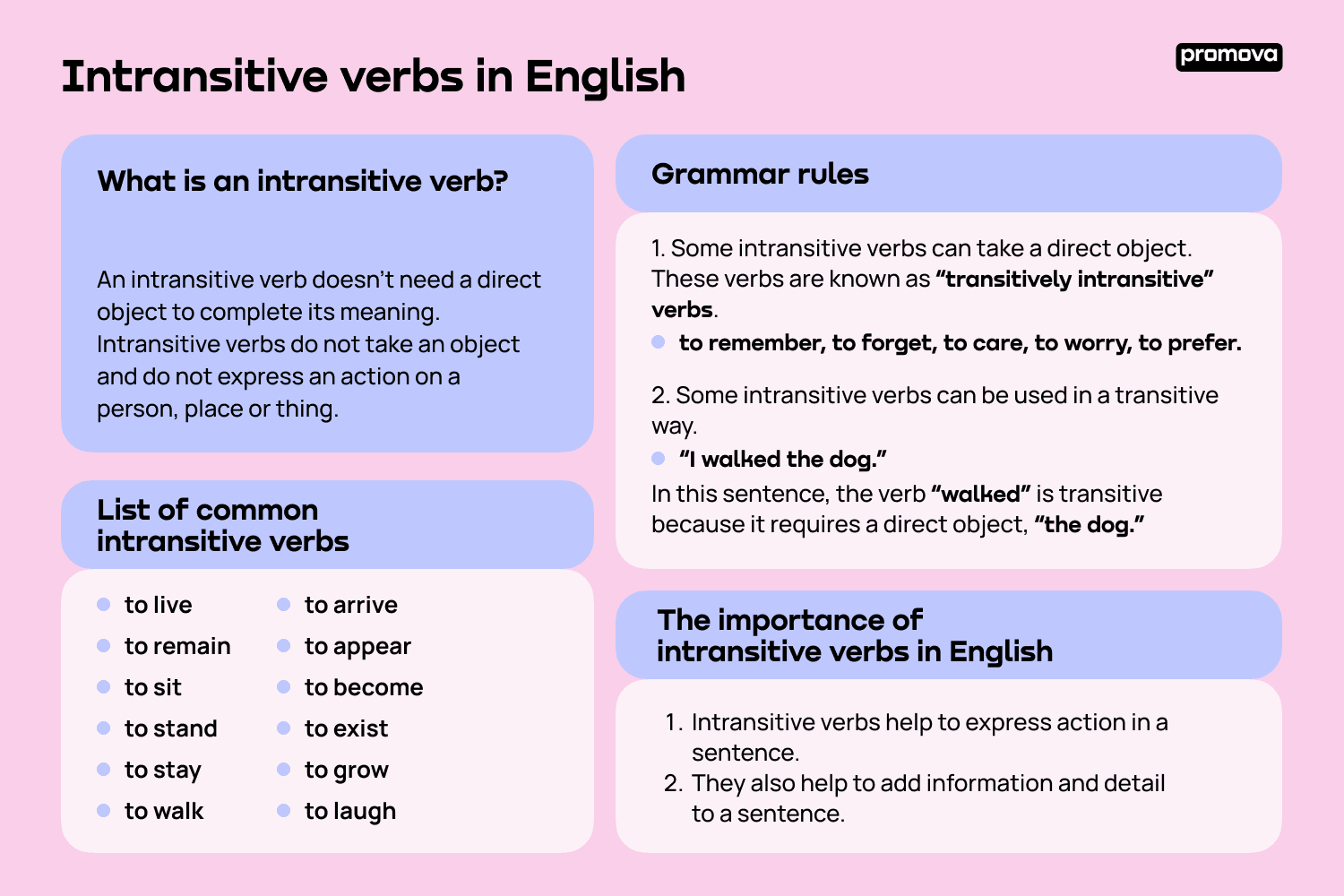Verbs are an essential part of any sentence, as they express action or state of being. Transitive and intransitive verbs are two types of verbs that function differently in a sentence. Understanding the difference between these two types of verbs is crucial for constructing clear and grammatically correct sentences.
Transitive verbs require a direct object to complete their meaning, while intransitive verbs do not. This distinction is important for determining the structure of a sentence and ensuring that it conveys the intended message effectively.
Transitive Verbs
Transitive verbs are action verbs that require a direct object to complete their meaning. In a sentence with a transitive verb, the action is performed on the direct object. For example, in the sentence “She ate the apple,” the verb “ate” is transitive, and “the apple” is the direct object that receives the action of eating. Without the direct object, the sentence would be incomplete and unclear.
Transitive verbs can be followed by nouns, pronouns, or noun phrases that receive the action of the verb. It is essential to include a direct object when using a transitive verb to ensure that the sentence makes sense and conveys the intended meaning.
Intransitive Verbs
Intransitive verbs, on the other hand, do not require a direct object to complete their meaning. These verbs express action or a state of being without the need for a receiver of the action. For example, in the sentence “He sleeps peacefully,” the verb “sleeps” is intransitive, as it does not require a direct object to convey its meaning.
Intransitive verbs can stand alone in a sentence and still make sense without a direct object. These verbs typically express actions or states that do not require an object to complete their meaning, making them versatile in sentence construction.
Understanding the distinction between transitive and intransitive verbs is essential for constructing clear and grammatically correct sentences. By identifying whether a verb requires a direct object or not, you can ensure that your sentences are structured correctly and convey your intended message effectively.
Next time you are writing a sentence, pay attention to the type of verb you are using and whether it is transitive or intransitive. By mastering the use of these two types of verbs, you can enhance the clarity and coherence of your writing.
